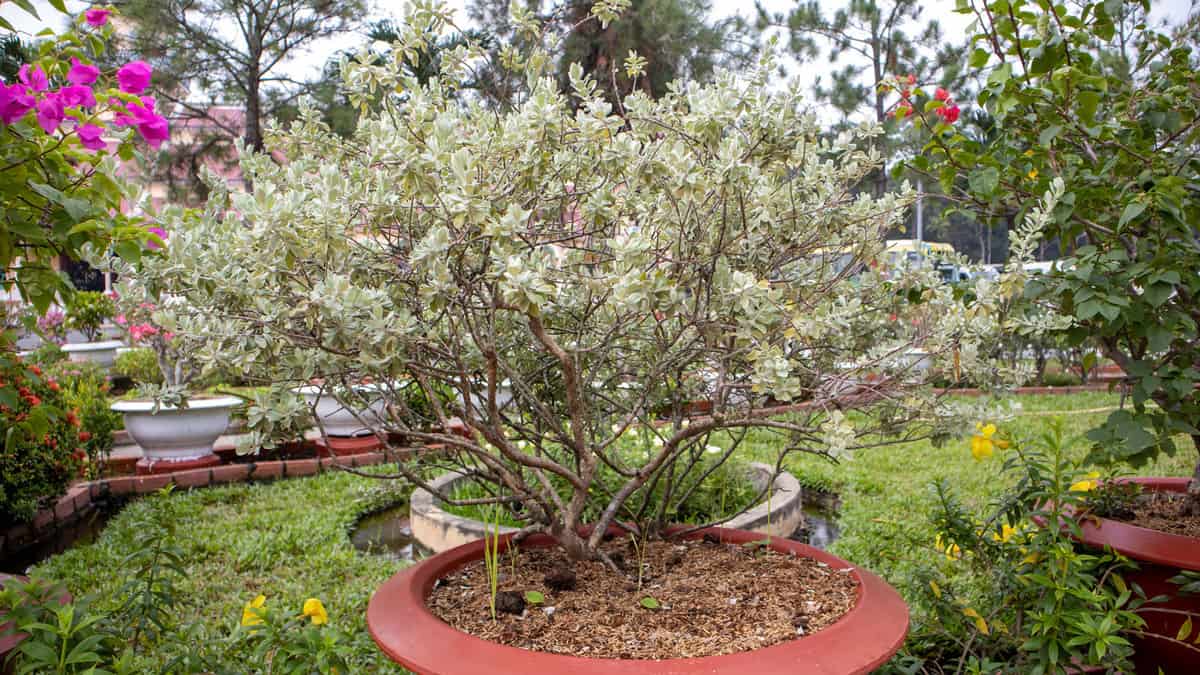Are you looking for a stunning plant to add color and natural beauty to your garden? If so, Texas Sage is an excellent choice.
But before you start planting, you might be wondering about the roots. Are they invasive? Will they damage your property or plumbing?
Well, the good news is that Texas Sage roots are not invasive! You can plant them without worrying about damage to your patios, sidewalks, plumbing, or your home's foundation.
So, Texas Sage is the way to go if you want to add some natural beauty to your garden without any invasive root concerns!
But that's not all - there's so much more to learn about this stunning plant.

All About Texas Sage
Texas sage is a shrub-like plant native to the southwestern United States and northern Mexico. It is a popular landscaping plant known for its stunning purple, pink, or white flowers that bloom in the summer and fall.
Origin and Distribution
Texas sage, with the scientific name Leucophyllum frutescens is a member of the figwort family (Scrophulariaceae) and is closely related to plants like snapdragons and foxgloves.
In the wild, Texas sage grows in rocky, limestone soils in arid and semi-arid regions, such as the Chihuahuan and Sonoran deserts.
It's a hardy plant that can tolerate extreme heat, drought, and poor soil conditions.
Physical Characteristics
Texas sage is a slow-growing, evergreen shrub that can reach a height and width of 6-8 feet with proper care.
It has woody stems and silver-gray or light green leaves that are covered with fine hairs to reduce water loss. The leaves are oval-shaped, about 1 inch long, and have a leathery texture.
Texas sage produces showy, tubular flowers when humidity increases or after a hard rain. The flowers are about 1 inch long and attract pollinators like bees, butterflies, and hummingbirds.
Texas sage is a low-maintenance plant that requires little water and fertilizer once established. It resists pests and diseases, and its roots are not considered invasive.
However, Texas sage can spread considerably and overwhelm other plants once established. To prevent this, it's recommended to prune Texas sage regularly and plant it in well-draining soil.
Root System of Texas Sage
If you consider adding Texas sage to your garden, you may wonder about its root system. Here's what you need to know:
Root Depth
The root system of Texas sage is relatively shallow, typically extending only a few feet into the soil.
Root Spread
While Texas sage roots aren't considered invasive, they can spread considerably once established. This can make it difficult for other plants to thrive in the same area.
To prevent this, consider planting Texas sage in a container or using a barrier to contain its root system.
Impact on Native Species
Texas Sage is a native plant to Texas and does not significantly impact native species.
Invasive species, on the other hand, produce a measurable impact, threaten native species, and can cause harm to the economy, environment, or human health.
Managing Texas Sage
Planting Guidelines
Give it enough space to grow
Texas Sage can grow tall and wide, so it needs adequate space to thrive. Plant each Texas Sage at least 6 feet apart to prevent overcrowding and allow good air circulation.
Plant in fall or early spring
This is the best time to plant Texas Sage because the weather is more relaxed, and has time to establish roots before the hot summer months.
Planting in the fall or early spring will also give your Texas Sage enough time to grow and bloom during the summer.
Choose the right location
Texas Sage prefers arid to semi-arid regions and is suitable for USDA zones 8 to 11. It can tolerate heat and drought and is an excellent choice for gardens in hot and dry areas.
However, it's essential to ensure the soil is well-draining to prevent root rot.
Care Guidelines
Water deeply but infrequently
Water it deeply once a week during the summer and every two weeks during the winter.
Prune in late winter or early spring
This will encourage new growth and help maintain its shape. Be sure to use sharp pruning shears and cut at a 45-degree angle.
Fertilize once a year in the spring
Use a slow-release fertilizer to avoid over-fertilizing and burning the plant. Be sure to follow the manufacturer's instructions for application.
Related posts:
10 Secret Gardening Tips For The Warm Climates Of Zone 8
10 Luscious Tropical Landscape Ideas For Zone 9
Final Words
Texas sage is a stunning and low-maintenance plant that can enhance your garden's visual appeal.
Although not considered invasive, it can gradually outgrow surrounding plants and prevent them from receiving essential resources like space, nutrients, and sunlight.
However, with adequate care and attention, Texas sage can flourish and bring a touch of natural elegance to your outdoor environment.
If you enjoyed reading this article and want to learn more, be sure to check this out:
